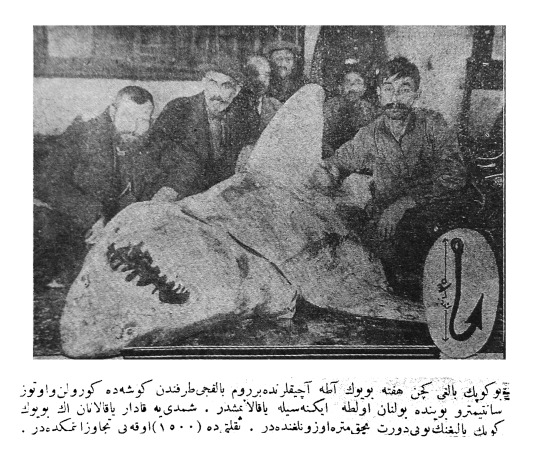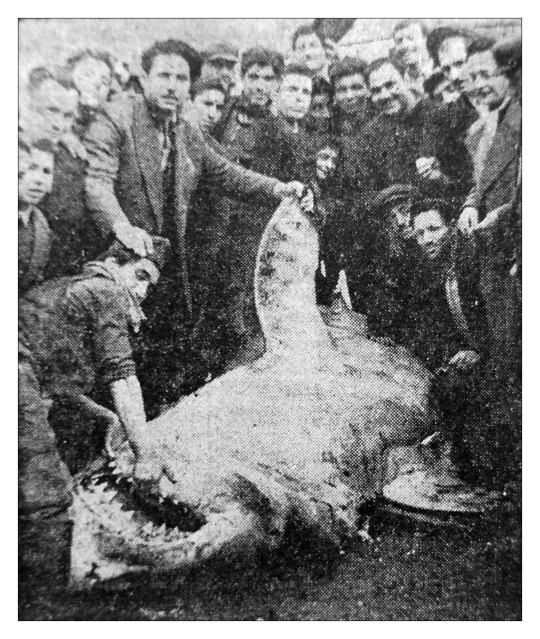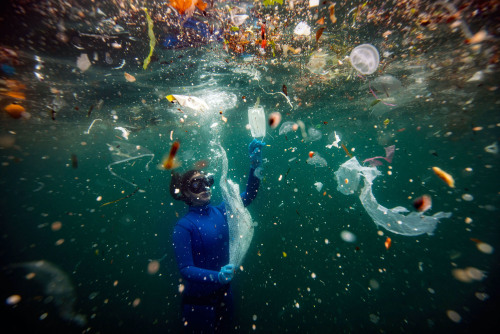#bosporus
New danger to underwater life!
The COVID-19 pandemic is taking a detrimental toll on the Earth’s oceans: researchers say around 30% more waste has made its way into the seas in the last year, primarily non-recyclable materials like face masks and plastic take-out containers. In Şebnem Coşkun’s underwater photograph taken in the Bosporus Strait, the ethereal, translucent bodies of jellyfish drift vertiginously in a whirlpool of plastic and debris; a diver reaches for a face mask floating ominously in the center.
Coşkun, a Turkish artist and photojournalist, is the third place winner of this year’s Nature Conservancy Photo Contest in the “People and Nature” category. The figure in her stunning image is free diver Şahika Ercümen, Turkey’s multiple world record holder and United Nations environmental advocate, captured collecting trash near the Ortaköy coastline on June 27, 2020.
Abouthalf a million tons of plastic are dumped into the Mediterranean every year — the equivalent of 33,800 plastic bottles entering the sea each minute, Coşkun notes in a statement about the photograph.
“Ever since I started scuba diving in 2014, the things that have impressed me the most underwater have been floating plastic and waste. I thought there was a world underwater that would fascinate me, but this sight shocked me,” she informed Hyperallergic. “Then I started working on marine litter. I was working as a photojournalist at Anadolu Agency and I started taking pictures to show the other side of this world.”
“After I started to see the waste, I stopped buying the water sold in plastic bottles. If my encounter with waste has changed me so much, I think it can change everyone,” Coşkun added.
The use of face coverings and different private protecting tools (PPE) has confirmed important to assist curb the unfold of coronavirus, however these things have to be rigorously discarded to keep away from harming marine wildlife and ecosystems. Encouraging reusable masks and implementing insurance policies to cease littering may help, in line with the conservation group OceansAsia.
Nature Conservancy Photo Contest in the “People and Nature”
© Sebnem Coskun/TNC Photo Contest 2021
Post link
Until the 1950s, Istanbul’s Bosporus strait was frequently visited by massive great white sharks, Charcharodon carcharias.

A massive specimen caught in the early 1920s, from Büyükada, a resort island just off Istanbul. Back in those years, Turkey still used the Arabic alphabet. A rough translation of the caption reads: “This shark was caught last week in Büyükada by Greek fishermen. To this day it is the biggest shark to be caught over there, its weight could surpass 1500 kg.”

This big guy was caught in Tuzla, on the Asian part of Istanbul province.

The great white sharks visited Istanbul to catch massive tuna fish, Thunnus sp. - which were also prized by local fishermen. Sometimes, sharks simply camped by seaside factories that processed the tuna to feed on their refuse.

This massive specimen was exhibited at the Taksim Artillery Barracks - currently the site of Gezi Park, popularised recently as the flashpoint of massive and controversial riots.

Harpooned sharks were occasionally left to die on nearby beaches. This picture is from the Kabataş shore; currently a hub of construction sites and inter-city boat ports.

An enormous specimen hung for display near the Galata bridge. It is a sobering thought that these sharks, the tuna fish, and the fishermen who caught them have all disappeared as the city turned into a crowded, polluted metropolis of 16 million people.
Sources:Büyük Beyaz Bilmece [The Great White Riddle] by Hakan Kabasakal. (2015) and National Geographic Turkey.
Images reproduced for non-commercial purposes.
Contact [email protected] for removal.

